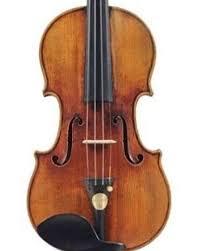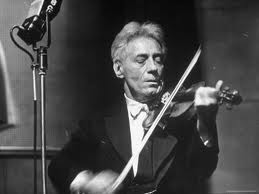
It’s a familiar and often dubious story which almost always ends in disappointment…A homeowner discovers a long-forgotten violin tucked away in a dusty attic. On a slip of paper inside the instrument’s f holes, the words “Antonio Stradivari” can be faintly made out. Most of the time, on closer inspection, these instruments are determined to be cheap copies. But the recent discovery of a 1731 Stradivarius, which belonged to Rodolphe Kreutzer, proves that rare, miraculous discoveries can happen.
The violin was found in a closet in the New York apartment of late millionaire Huguette Clark. It went up for auction this week at Christie’s and was expected to sell for upwards of $10 million. You can get a sense of the sound of the “Kreutzer” Stradivarius here and learn about its esteemed history here.
The violin disappeared into Clark’s private possession in 1921. Had it spent the last ninety years in the hands of the world’s greatest violinists, it probably would not have remained in such “fresh” condition. At the same time, it’s unfortunate that such a great instrument was apparently withheld from the public, languishing as an art investment and curiosity piece for a wealthy recluse. Hopefully, we’ll hear it on the concert stage in coming years.
Beethoven’s “Kreutzer” Sonata
Rodolphe Kreutzer (1766-1831) was influential as a violinist and teacher. He served on the faculty of the Paris Conservatory for thirty years, succeeded by his student, Lambert Massart (teacher of Wieniawski and Kreisler), who inherited his Stradivarius. Kreutzer’s Forty-two Etudes or Caprices (1796) remain a fundamental part of violin pedagogy. Kreutzer was well regarded as a composer (listen to his Violin Concerto No. 17) and conductor.
It’s ironic that Kreutzer is now associated with Beethoven’s Violin Sonata No. 9, Op. 47. Beethoven originally dedicated the sonata to his friend violinist George Bridgetower, providing the teasing inscription, Sonata per un mulattico lunatico. Bridgetower performed the sonata with Beethoven on May 24,1803. He was forced to sight read over Beethoven’s shoulder because of a lack of rehearsal time. Following the concert, Beethoven and Bridgetower went out for drinks. Accounts suggest that Bridgetower insulted a woman whom Beethoven admired. The furious composer immediately withdrew the dedication and rededicated it to Rodolphe Kreutzer, writing:
This Kreutzer is a dear kind fellow who during his stay in Vienna gave me a great deal of pleasure. I prefer his modesty and natural behavior to all the exterior without any interior which is characteristic of most virtuosi. As the sonata was written for a competent violinist, the dedication to Kreutzer is all the more appropriate.
Kreutzer ignored Beethoven’s dedication and never played the sonata, calling it “outrageously unintelligible.”
The story of Beethoven and Bridgetower inspired Rita Dove’s poetry, Sonata Mulattica. Leo Tolstoy also wrote a novella called The Kreutzer Sonata.
Here is a live 1964 recording of Beethoven’s “outrageously unintelligible” sonata, performed by violinist Leonid Kogan and pianist Emil Gilels:
- Adagio sostenuto-Presto-Adagio 0:00
- Andante con variazioni 11:15
- Presto 26:18


